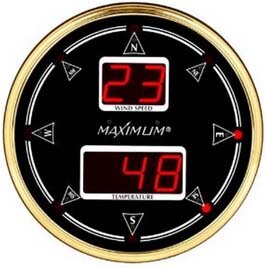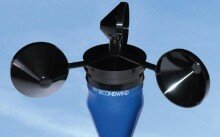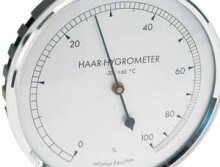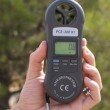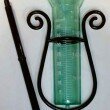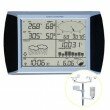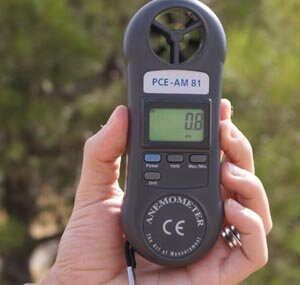 A handheld anemometer is very reliable devices that can help anyone make their own wind readings. It is very handy that you can easily slip it inside your pocket. Developed during the 15th century, anemometers of today have very much improved since then. The term “anemometer” is from the Greek word “anemos” which means “wind”.
A handheld anemometer is very reliable devices that can help anyone make their own wind readings. It is very handy that you can easily slip it inside your pocket. Developed during the 15th century, anemometers of today have very much improved since then. The term “anemometer” is from the Greek word “anemos” which means “wind”.
The History of Anemometers
The first anemometers appeared in Italy and in Northern Europe before spreading to the Americas. They were very simple and ingeniously designed. It composed of a single flat disc which would shake in accordance to the winds motion. By looking at the inclination of the disc, the people could determine the degree of the wind pressure. By mid 19th century, more sophisticated anemometers were being used as cups were attached to the ends of a wind vane. When wind rose it would be caught by the cups making the vane turn. The number revolutions of the vane were recorded for readings. This kind of anemometer is still being used today. A similar version of this type spins like a wind mill (vertically) instead of the traditional vertical spinning.
Modern anemometers are very impressive devices that can give you accurate wind readings on an LCD display. They use not only the wind to make the readings but also the movement of sound waves, the detection of particles through laser beams, and the measurement of thermal energy.
What can an anemometer do?
The anemometer is basically a device used to measure the speed of wind. Modern anemometers not only measure wind speed but also different aspects of the wind such as: humidity, temperature and pressure. Anemometers are usually used in weather stations for meteorological purposes. There are five types of anemometers:
- Hot Wire Anemometer
- Sonic Anemometer
- Laser Doppler Anemometer
- Windmill Anemometer
- Cup Anemometer
The Handheld Anemometer
A handheld anemometer or personal anemometer is a small device, usually only a few inches in length width, that is able to measure wind very accurately (within %5). Most handheld anemometers are capable of performing the following:
- Measures wind speed (measures up to 100mph easily) in mph, km/h, m/s or Knots – Read wind chill and temperature in Fahrenheit and Celsius – Easily display wind readings – Not easily affected by strong wind and sudden change of direction
Some personal anemometers have additional features to make the device more appealing. Some brands sell anemometers with a waterproof casing and are able to float on water. Others have included the Beufort Scale for the readings while others are even drop tested to make sure that the product will not easily break. Most handheld anemometers are built to not be affected by the changing directions of strong gusts of wind.
Who can benefit from using a handheld anemometer?
The handheld anemometer is a very convenient device for anyone who needs wind reading. Some examples of people who benefit from this kind of anemometer are: engineers, people who take kite flying seriously, wind surfers, and climbers.
Both professionals and amateurs can benefit from using a handheld anemometer. Since it is handy weather watchers can easily make their own weather forecasts confidently.




